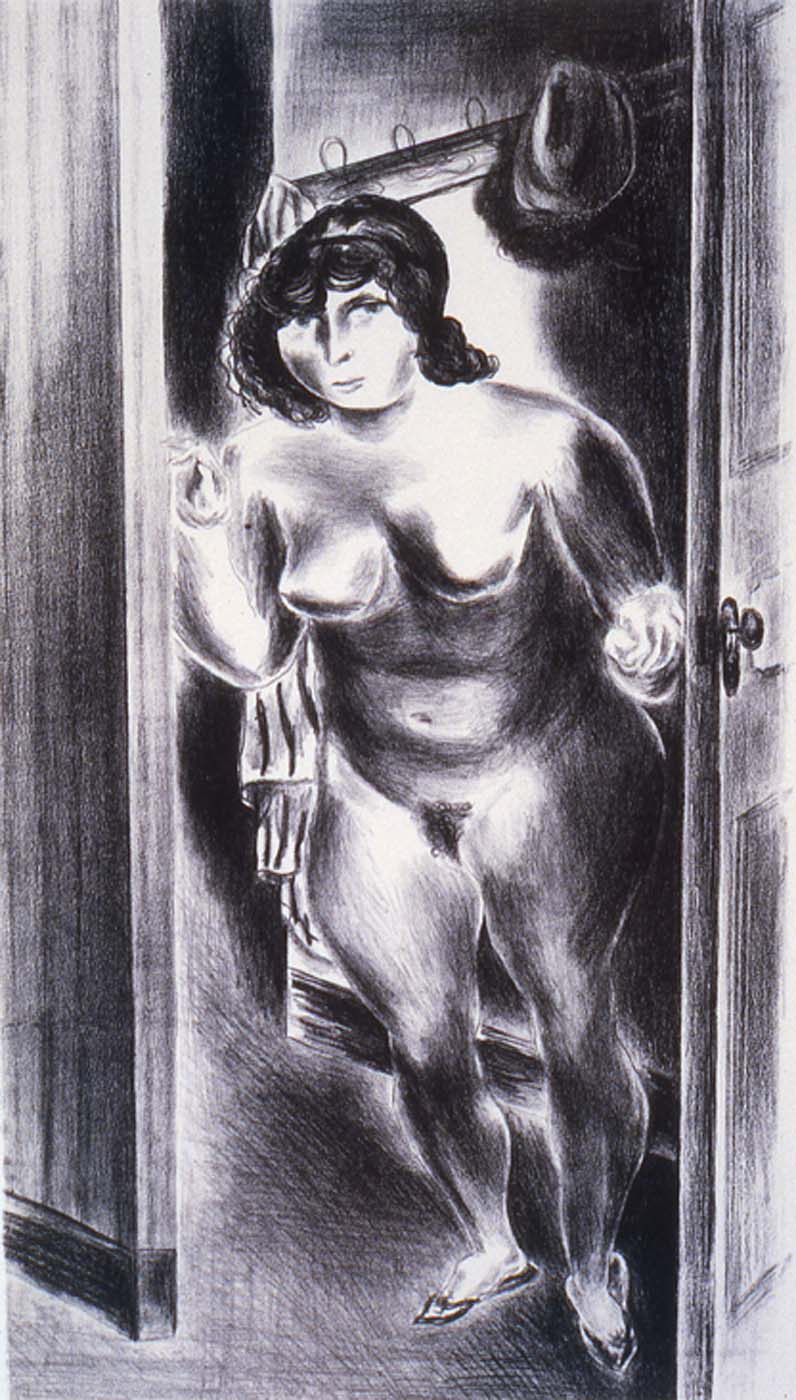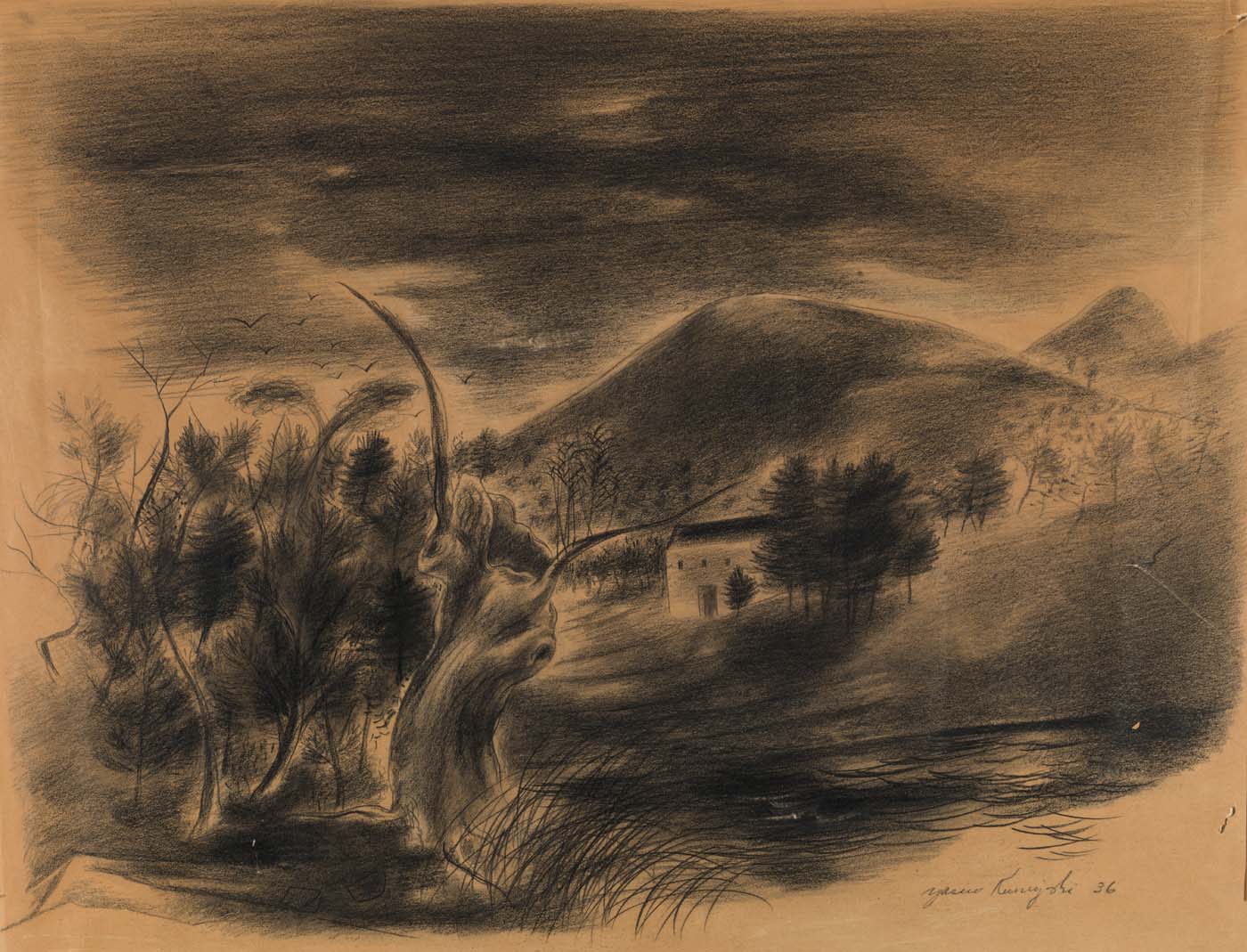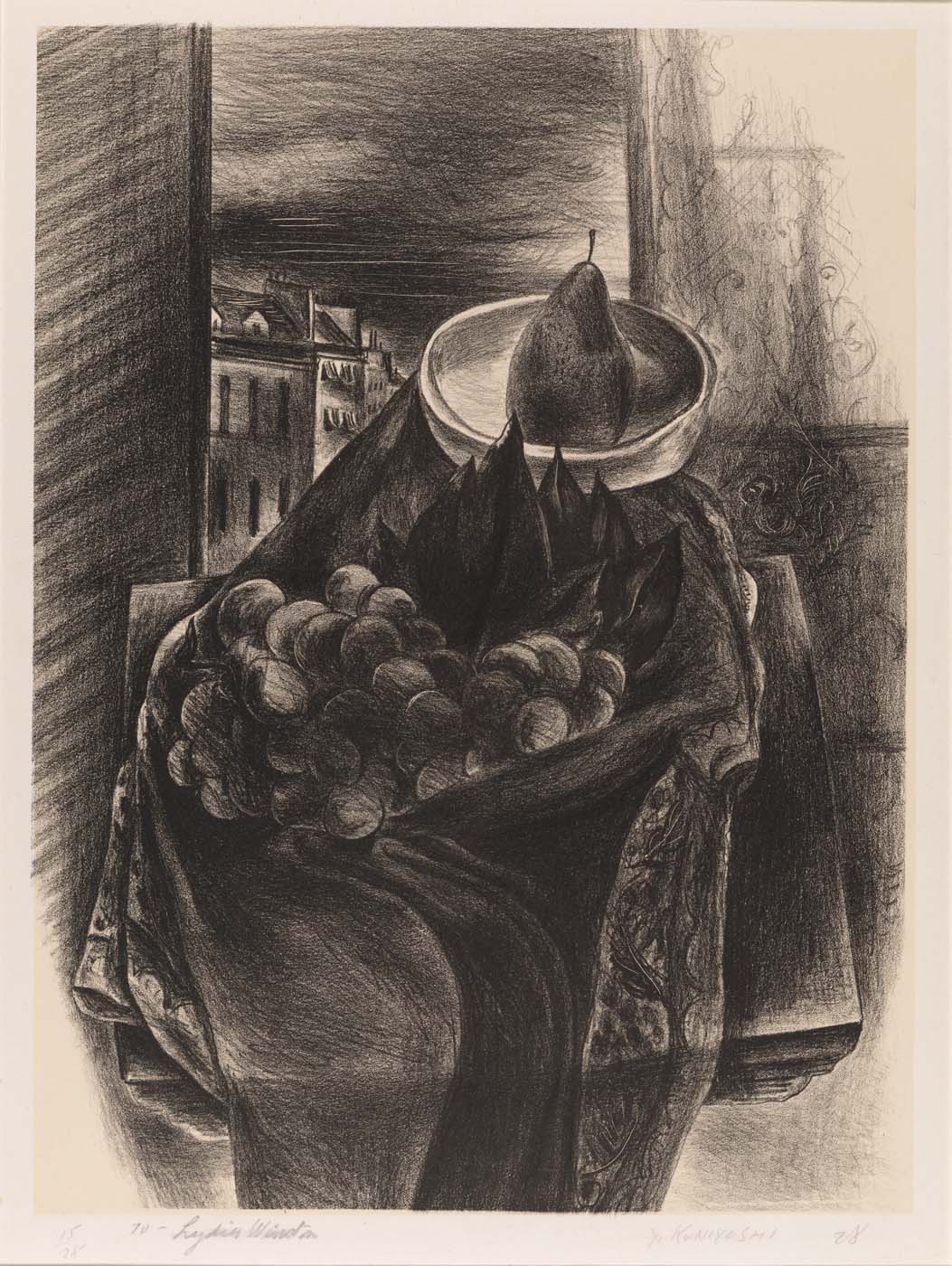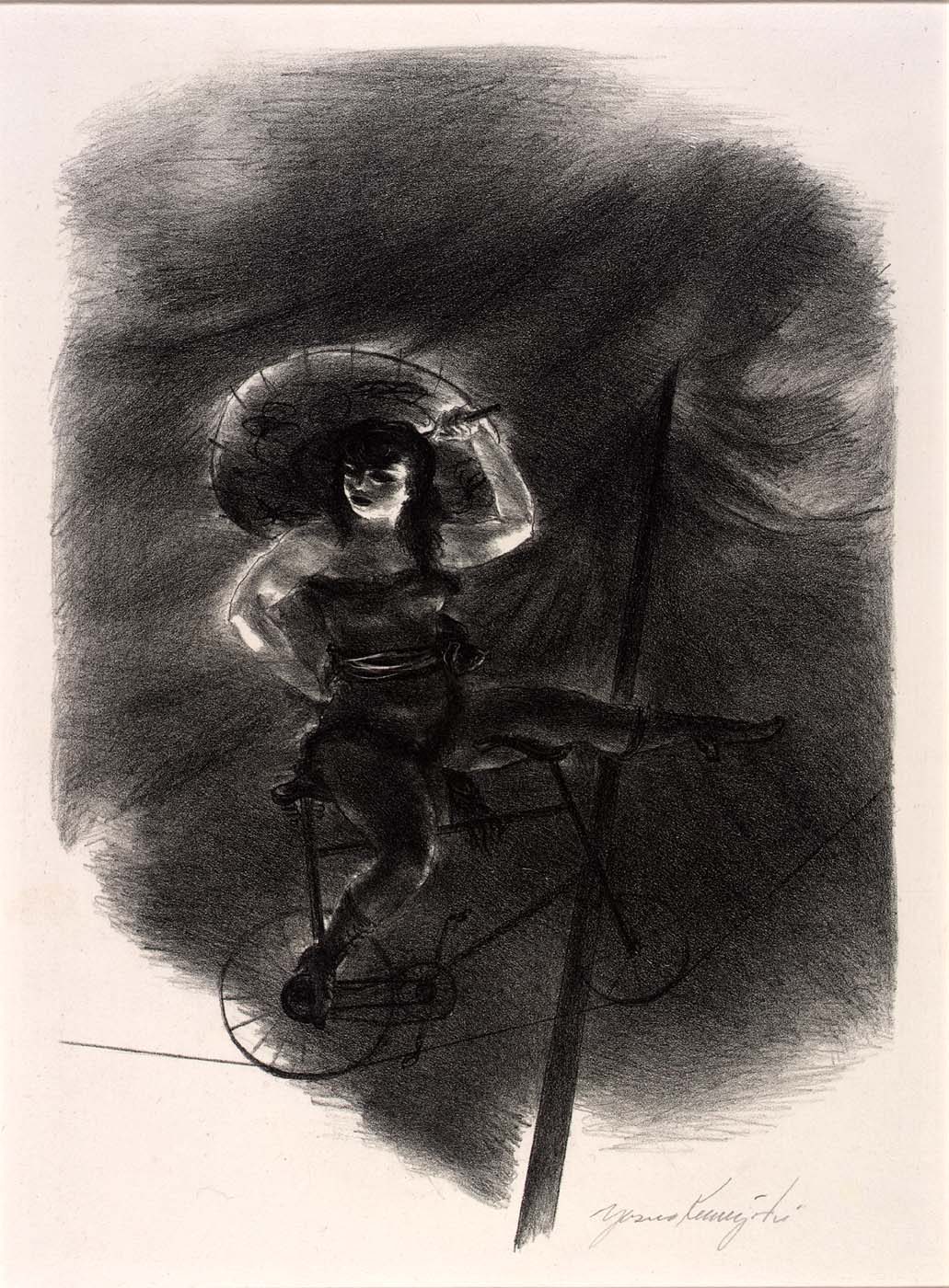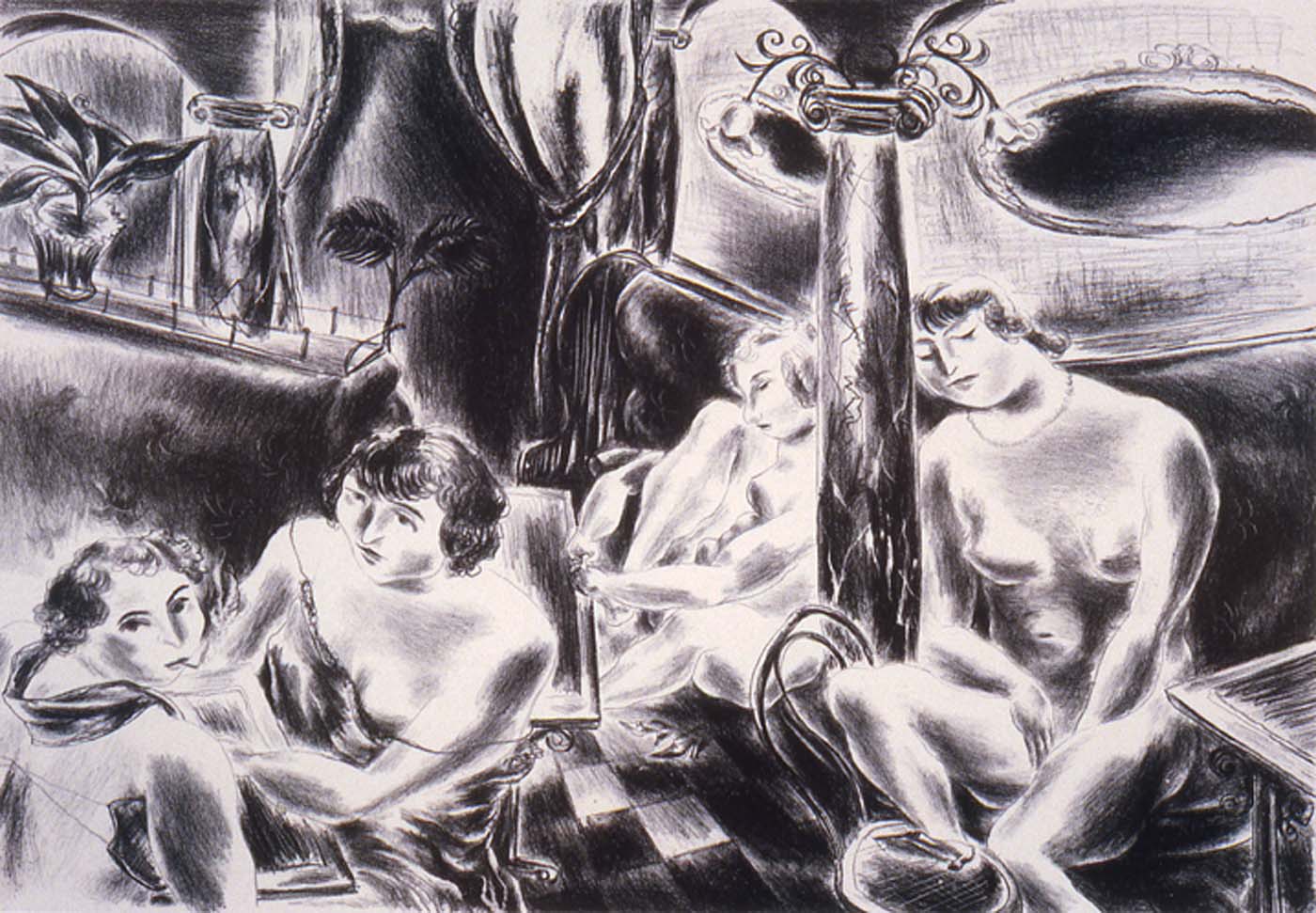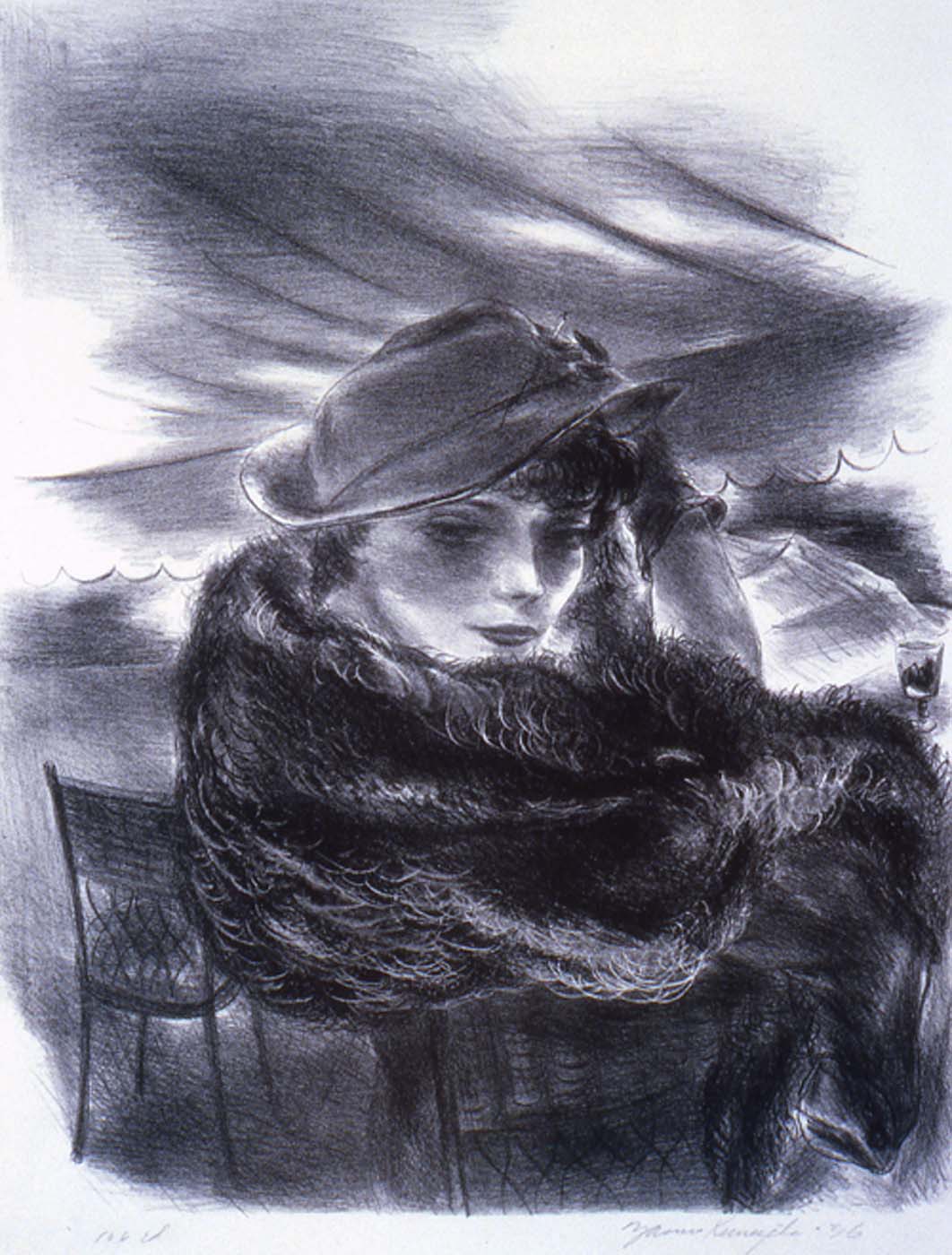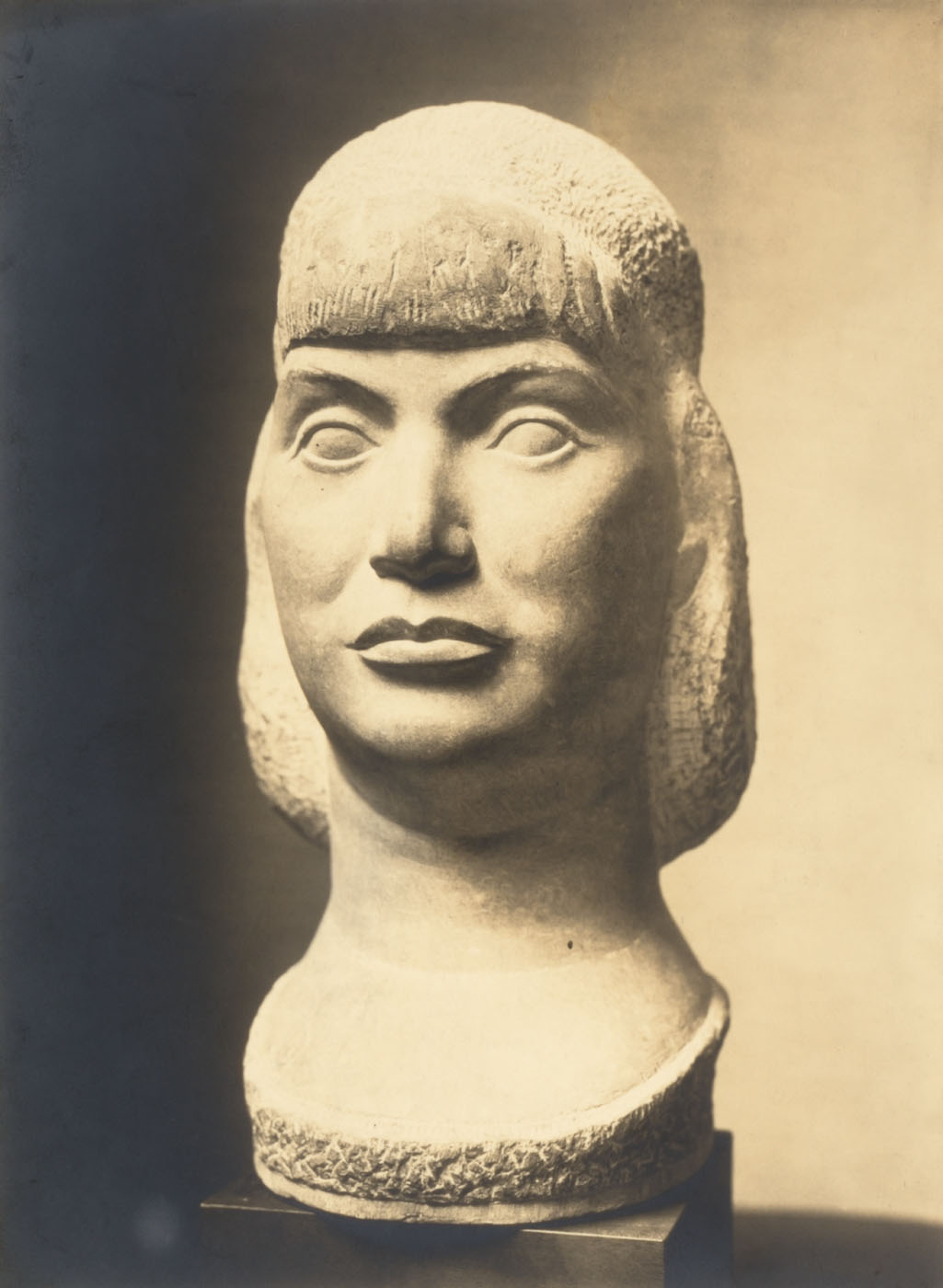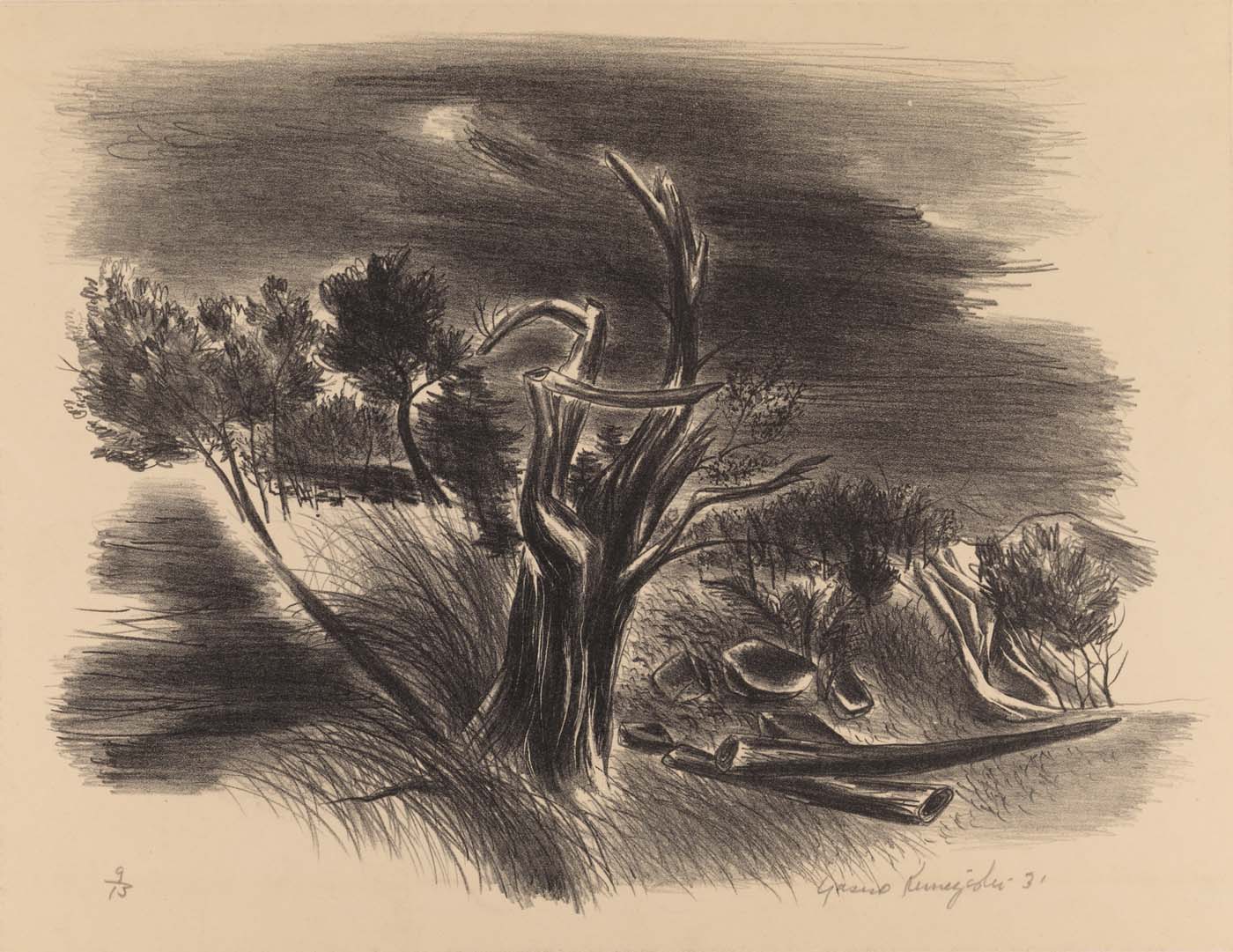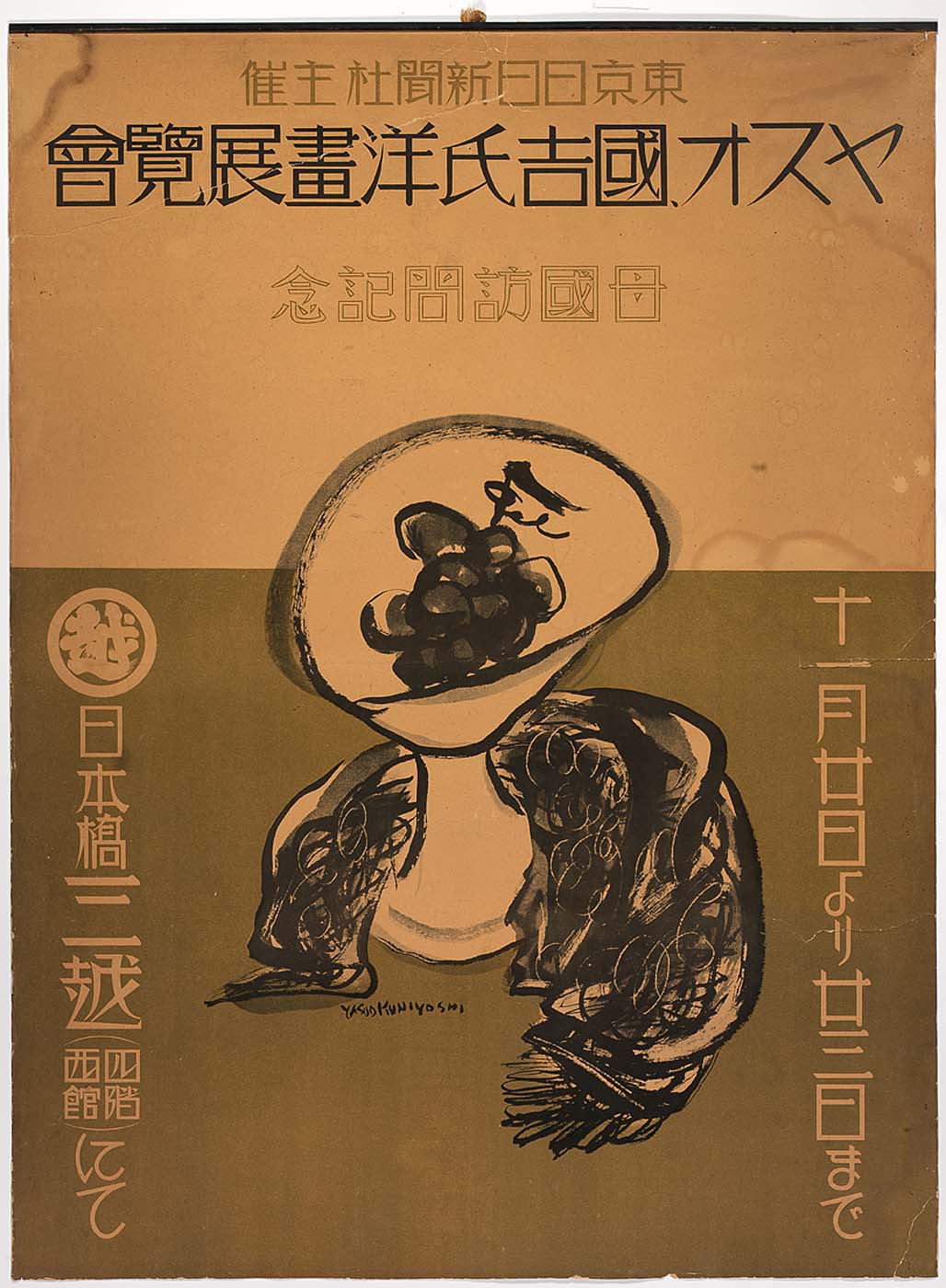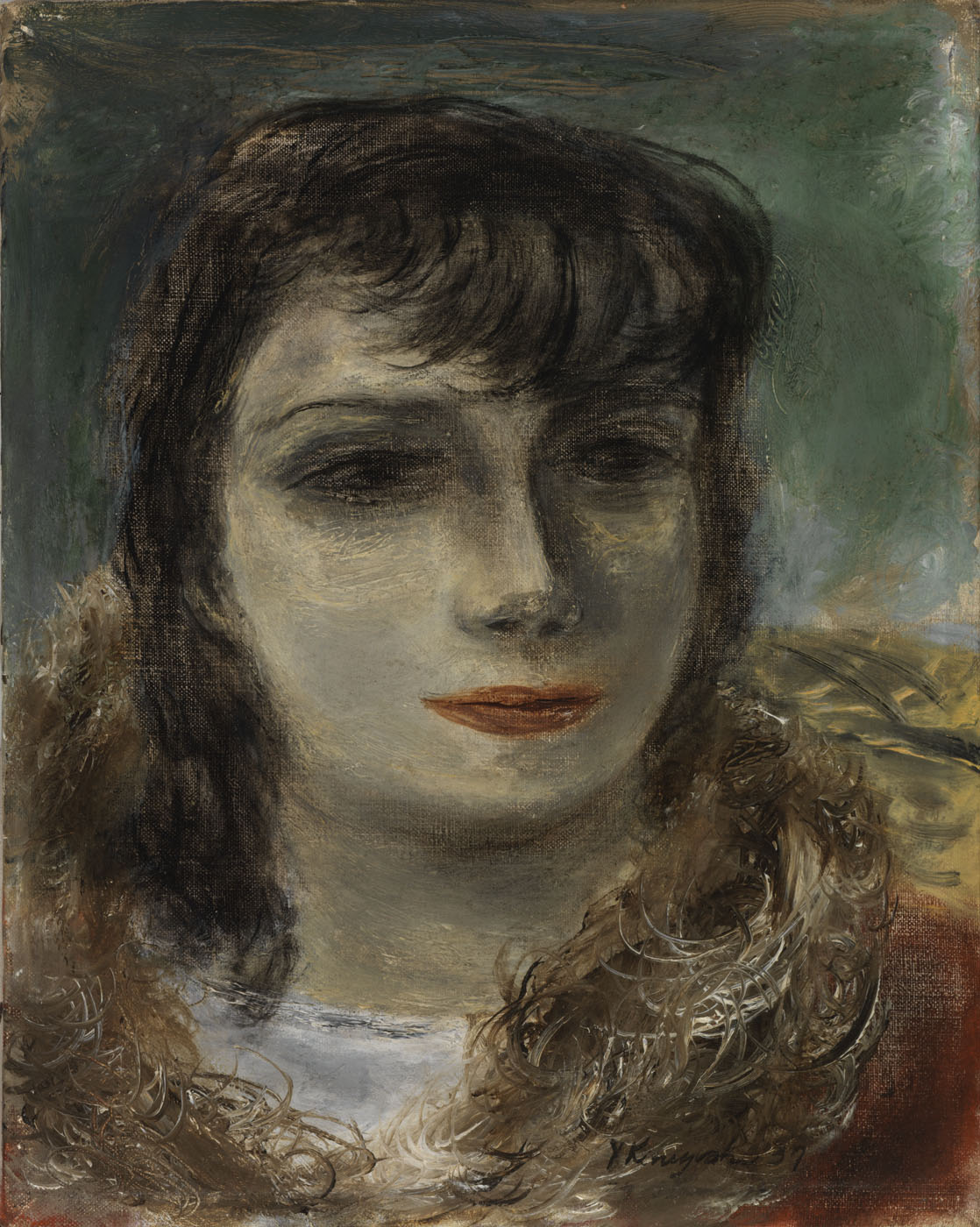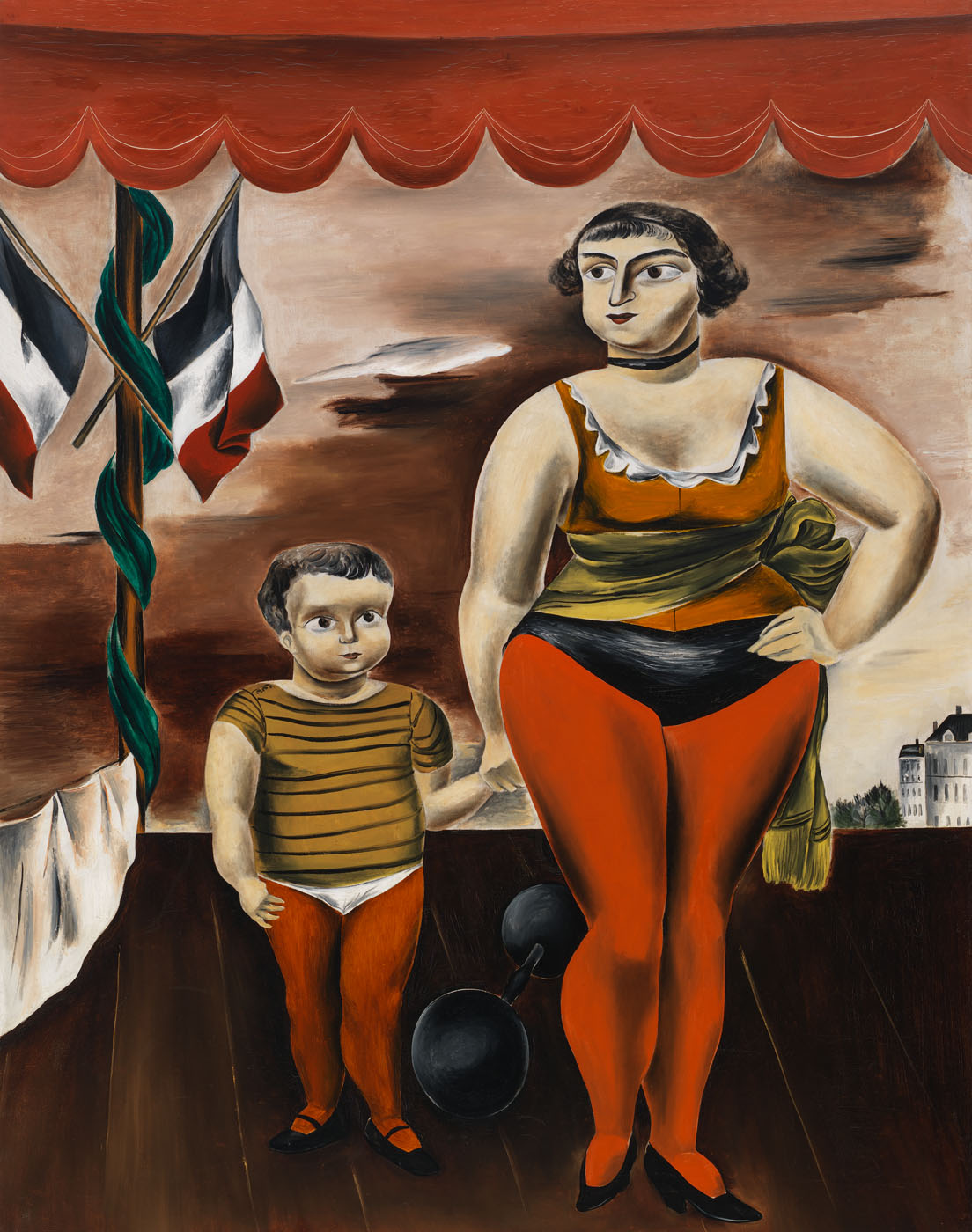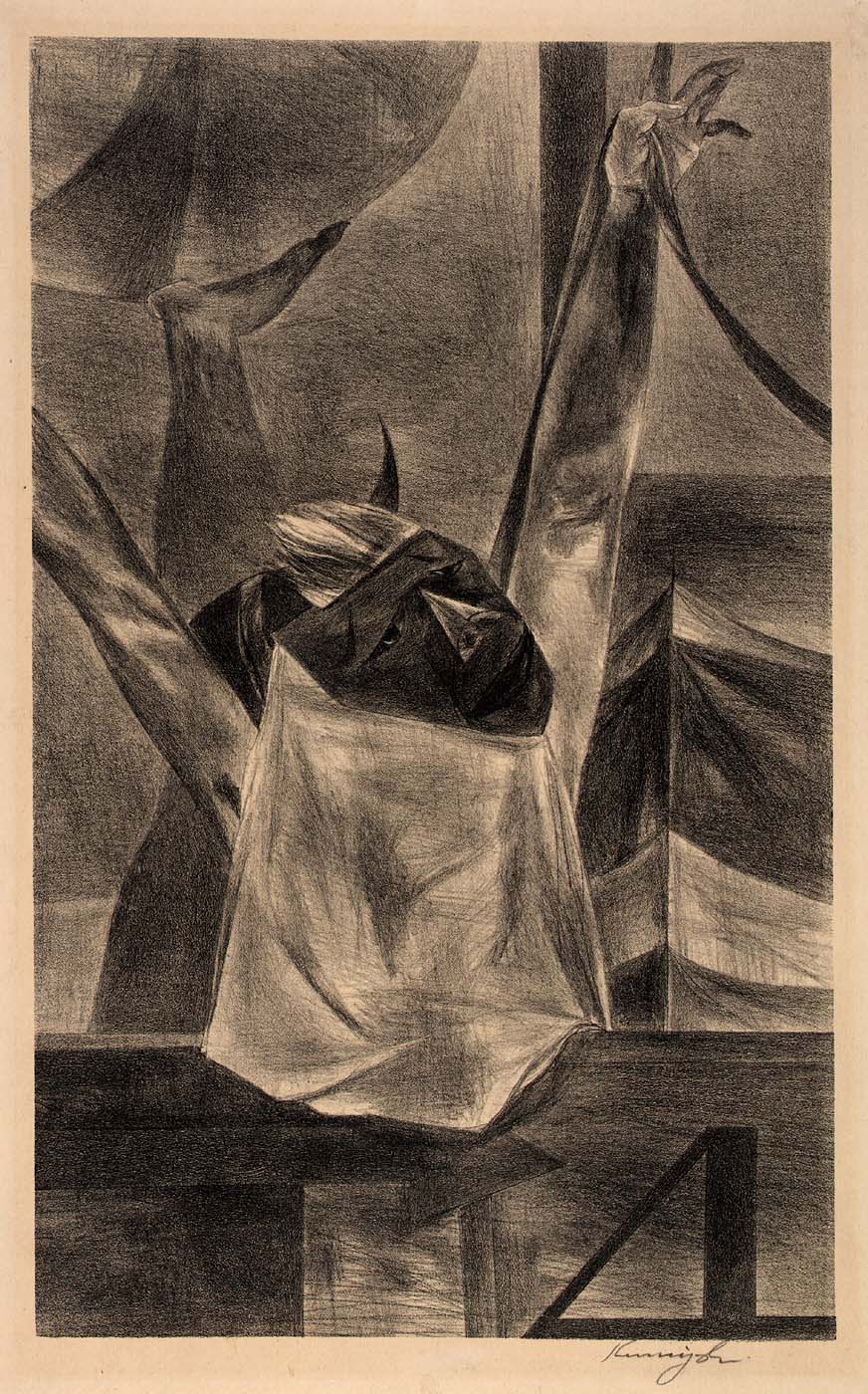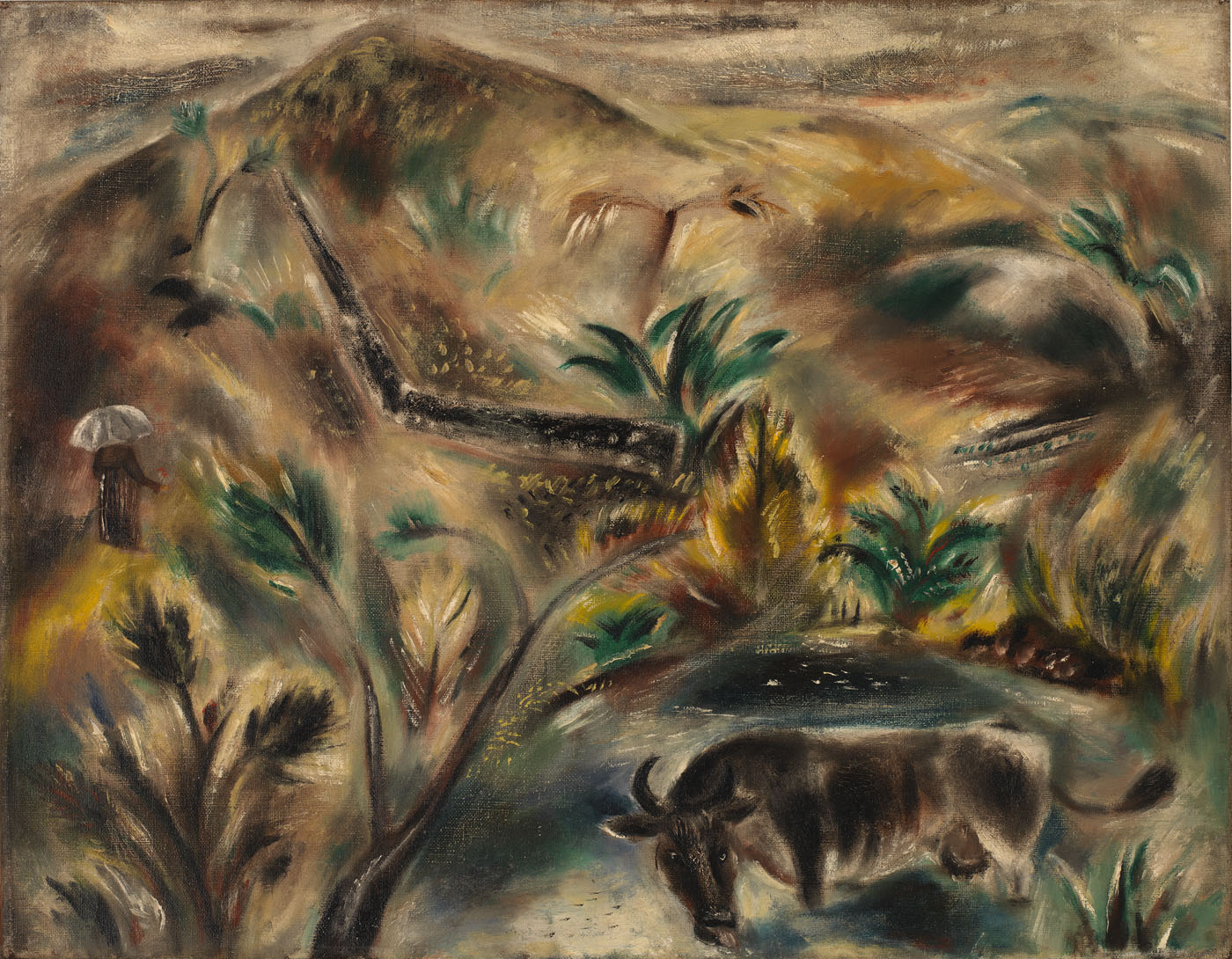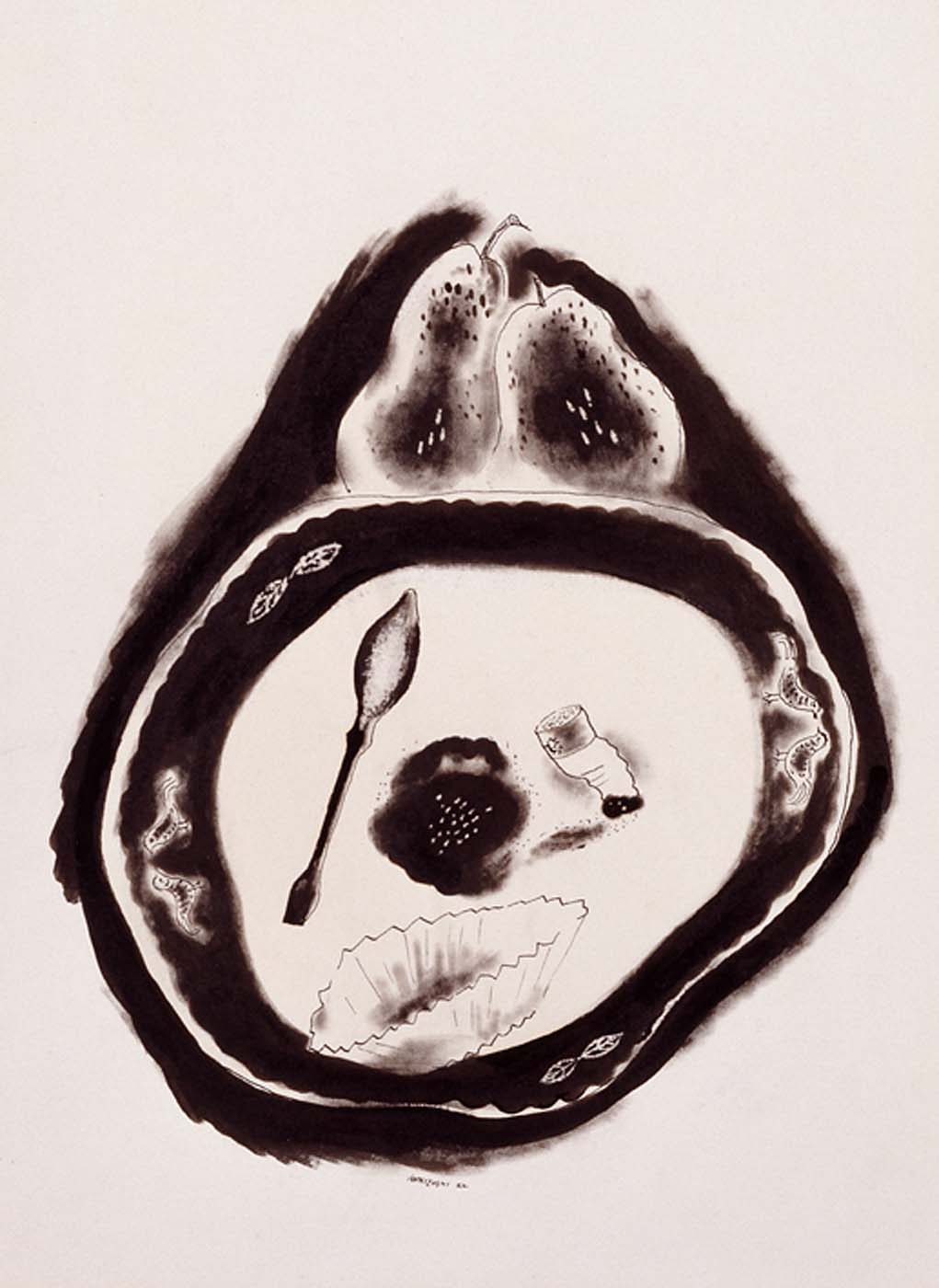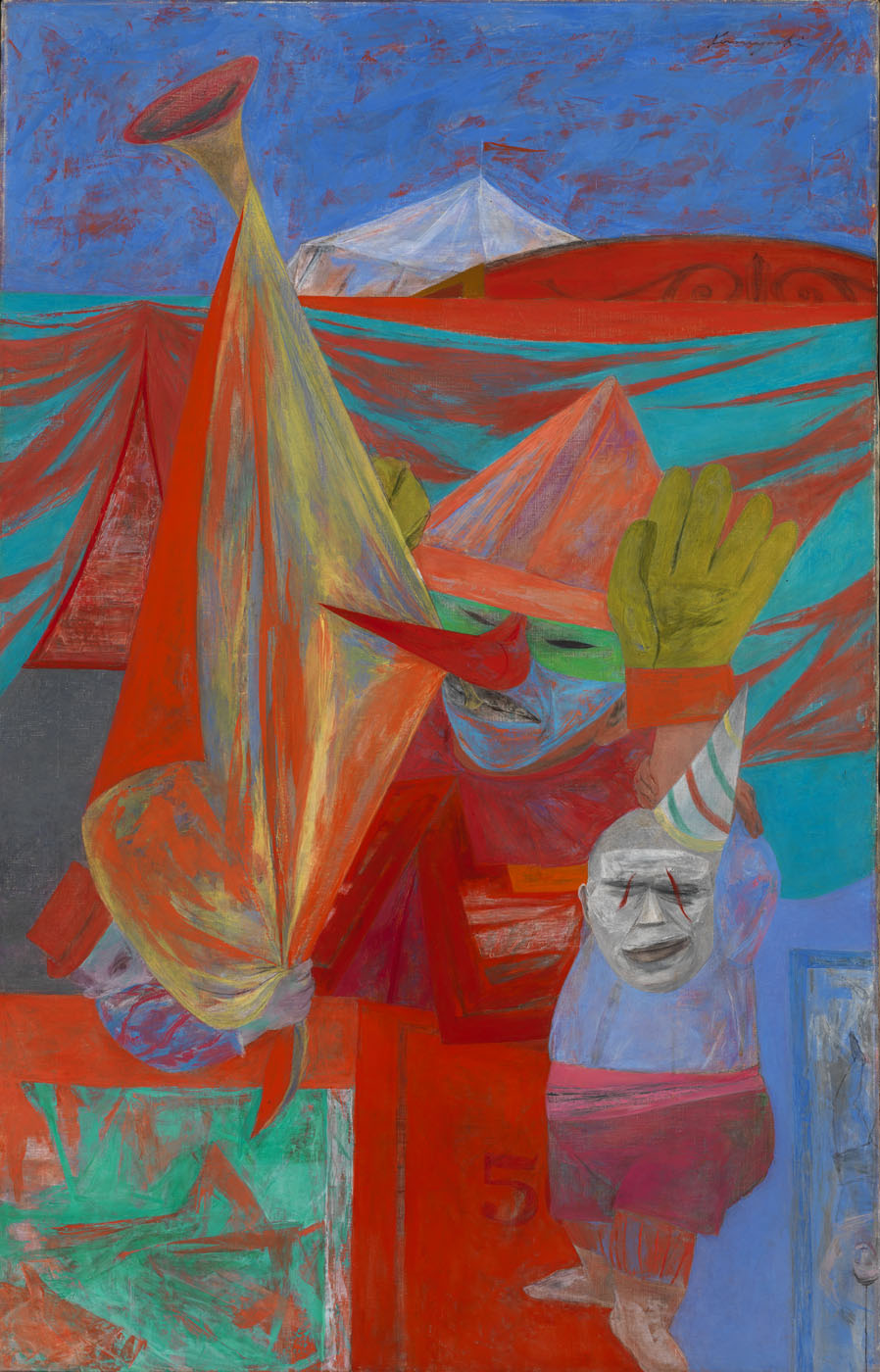Yasuo Kuniyoshi
Yasuo Kuniyoshi emigrated from Japan to America in 1906. Poor and unable to speak English, he sought adventure and employment, planning to return home once he had achieved prosperity. But after a visit to Japan in 1931, he realized he had become thoroughly at home in America and remained here for the rest of his life, developing a great affinity for New England.
Kuniyoshi's ten-year apprenticeship as an artist included three years at the Los Angeles School of Art and Design, which he attended at night after picking fruit during the day, brief stays at the National Academy of Design, the Henri School, and the Independent School, where he met and befriended Stuart Davis, and four years at the Art Students League.
His first patron, Hamilton Easter Field, gave Kuniyoshi and his first wife, artist Katherine Schmidt, a stipend on which to live in New York as well as a studio in Ogunquit, Maine, where they spent ten summers. The American primitive art and artifacts Kuniyoshi saw there for the first time and soon began to collect had a strong influence his art. Maine scenery was also a primary force in his artistic development. "That severe landscape and simple New England buildings were my God," he wrote. "Whenever I did anything, I used to make up that type of scenery somewhere in the picture." In later life, Kuniyoshi taught at the Art Students League, fought for artists's rights, and was a leader in American art organizations.
William H. Truettner and Roger B. Stein, editors, with contributions by Dona Brown, Thomas Andrew Denenberg, Judith K. Maxwell, Stephen Nissenbaum, Bruce Robertson, Roger B. Stein, and William H. Truettner Picturing Old New England: Image and Memory (Washington, D.C.; New Haven, Conn; and London: National Museum of American Art with Yale University Press, 1999)
Objects at Indianapolis Museum of Art at Newfields (1)
Objects at Crystal Bridges Museum of American Art (1)
Objects at Dallas Museum of Art (2)
Objects at Colby College Museum of Art (3)
Objects at The Amon Carter (7)
Objects at Smithsonian American Art Museum (16)
Objects at Archives of American Art (28)





